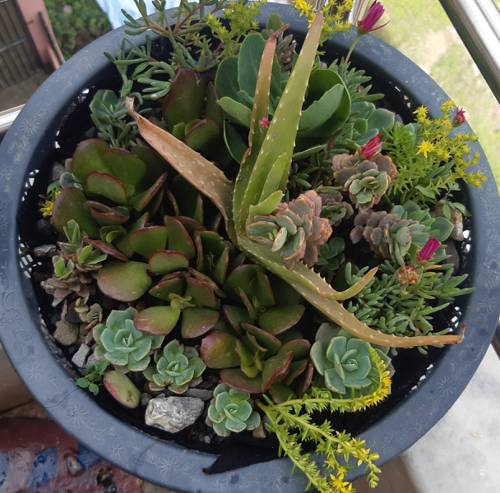
FAQ About Resilience Building in Indoor Plants

What does resilience building in indoor plants mean?
Resilience building in indoor plants refers to methods and practices aimed at strengthening plants' ability to resist and recover from pests, diseases, and adverse environmental conditions. This involves promoting robust growth, ensuring optimal health, and implementing preventive measures against potential threats, thereby allowing plants to thrive despite challenges.

How can I make my indoor plants more resistant to pests?
To make indoor plants more resistant to pests, regularly inspect them for signs of infestations, keep them clean by wiping leaves with a damp cloth, and ensure proper air circulation. Using natural pest repellents like neem oil and increasing plant diversity can also help create an environment unfavorable to pests.

What types of environmental stressors can affect indoor plants?
Environmental stressors that can affect indoor plants include inadequate light, improper watering (either too much or too little), temperature fluctuations, low humidity, and poor soil quality. Addressing these stressors by providing appropriate conditions can help improve plant resilience.

How important is the choice of soil for building plant resilience?
Soil choice is crucial for building plant resilience as it provides the necessary nutrients and supports water retention and drainage. Using high-quality potting mix suited to the specific plant type, enriched with organic matter like compost, can enhance resilience by promoting healthy root development and robust growth.

Can indoor plant resilience be improved through watering practices?
Yes, proper watering practices can significantly enhance indoor plant resilience. Ensure that plants are watered consistently but not excessively, allowing the soil to dry out slightly between waterings. Using room-temperature water and understanding the specific moisture needs of each plant can prevent root stress and promote overall health.

What role does light play in indoor plant resilience?
Light plays a critical role in indoor plant resilience as it is essential for photosynthesis, the process through which plants make food. Providing adequate light, whether natural or supplemented with grow lights, helps maintain energy levels, supports growth, and improves the plant's ability to cope with stressors.

How can I enhance the immunity of my indoor plants naturally?
Enhancing the immunity of indoor plants naturally can be achieved through proper nutrition and care. Using organic fertilizers, ensuring appropriate light and water, and incorporating natural immunity boosters like garlic or chamomile teas can help strengthen plants from the inside out.

Is it beneficial to rotate indoor plants, and why?
Yes, rotating indoor plants can be beneficial as it ensures even exposure to light, which promotes balanced growth. This practice can help prevent leaning or lopsided growth, thereby maintaining a healthy plant structure and increasing resilience.

What are the best natural pest control methods for indoor plants?
Some effective natural pest control methods include using neem oil, insecticidal soap, introducing beneficial insects like ladybugs, and creating homemade sprays from ingredients like garlic or alcohol. These methods are gentle on plants and help control pest populations without harmful chemicals.

How does proper drainage impact plant resilience?
Proper drainage is essential for plant resilience as it prevents waterlogging, which can lead to root rot and other diseases. Ensuring pots have drainage holes and using appropriate soil mixes can help maintain optimal moisture levels, promoting healthier plants that are better equipped to handle stress.

Can stress-resistant varieties improve indoor plant resilience?
Yes, selecting stress-resistant plant varieties can inherently improve resilience. These varieties are often bred to withstand specific environmental conditions, pests, or diseases, making them a good choice for indoor environments where such challenges are present.

How often should indoor plants be fertilized to boost resilience?
The frequency of fertilization depends on the plant type and growing conditions. Generally, indoor plants benefit from fertilizer every 4-6 weeks during the growing seasons of spring and summer. Using a balanced, slow-release fertilizer can provide continuous nutrients without overwhelming the plant.

What are some signs of stress in indoor plants?
Signs of stress in indoor plants include yellowing leaves, wilting, browning leaf tips, slowed growth, and dropping leaves. Identifying these symptoms early can help address underlying issues such as improper watering, light conditions, or nutrient deficiencies, thereby improving plant resilience.

Can pruning help improve the resilience of indoor plants?
Yes, pruning can help improve resilience by removing dead or diseased parts, encouraging new growth, and improving airflow around the plant. It also helps redirect the plant's energy towards healthier parts, which can enhance overall strength and stress resistance.

How does humidity affect indoor plant health and resilience?
Humidity levels can significantly affect indoor plant health and resilience. Many indoor plants originate from tropical environments and require higher humidity to thrive. Using a humidifier or placing a water tray near plants can help maintain appropriate humidity levels, preventing stress and promoting resilience.

What preventative measures can be taken to protect indoor plants from diseases?
Preventative measures include maintaining proper hygiene by cleaning tools and pots, ensuring good air circulation, avoiding overhead watering, and isolating new plants to monitor for disease spread. Regularly inspecting plants for signs of disease and acting quickly can also help keep them healthy.

How can I ensure indoor plants are not stressed by temperature changes?
To protect indoor plants from temperature stress, keep them away from drafts, heaters, and air conditioning vents, and maintain a stable indoor temperature suited to the plant type. Gradually acclimating plants to any temperature changes can also help them adjust more easily.

Are there specific indoor plants known for high resilience?
Yes, several indoor plants are known for their resilience, including the Snake Plant (Sansevieria), ZZ Plant (Zamioculcas zamiifolia), and Pothos (Epipremnum aureum). These plants are hardy, require minimal maintenance, and can adapt well to various indoor conditions.

Can companion planting indoors help with plant resilience?
Companion planting indoors can enhance resilience by promoting a balanced ecosystem and can support pest control. Some plant combinations can deter pests or provide beneficial conditions for each other, helping maintain healthier and more resilient plants.

What role does air circulation play in the health of indoor plants?
Air circulation is crucial for indoor plant health as it helps prevent mold growth, reduces humidity-related diseases, and aids in gas exchange. Proper ventilation keeps plants healthy and resilient to stress, encouraging robust growth and reducing the risk of infections.
